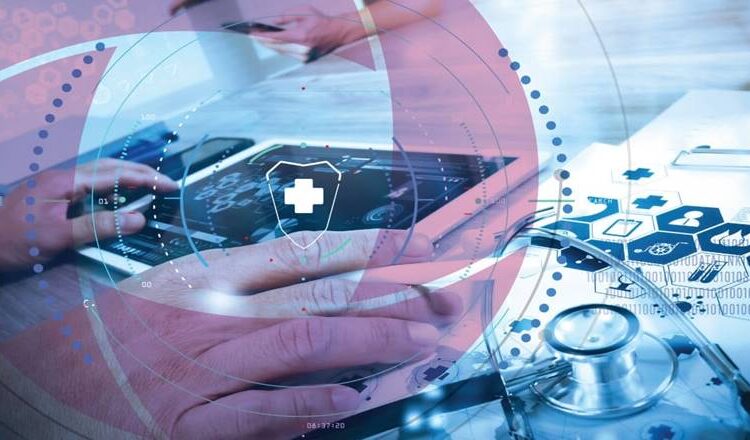Insurance forms, patient portals, EMRs, EHRs, and other medical systems. These resemble a labyrinth of info with a huge void between each participant.
They are unable to guarantee the possible degree of care and financial effectiveness since the two are not connected. This underlines the necessity for reliable healthcare info interchange to bridge these gaps.
This is why medical information interoperability has recently been in the limelight. If you’re a practitioner working alone, interworking isn’t a major concern.
However, if your systems aren’t cooperating and you’re trying to manage a busy clinic effectively. Exploring EHR interoperability solutions can assist in resolving these inefficiencies.
What does healthcare interoperability mean?
To understand the true meaning of interworking, consider your workflow. On the one hand, your employees gather, organize, and handle cross-departmental data using an HMS. On the other hand, your patients are unable to access your EHRs.
A stand-alone billing as well as claims management system is somewhere in the middle. It’s essential to comprehend the meaning of integration to put successful solutions into practice.
Compatibility across these systems creates a single, cohesive system where information is traded. They easily exchange and evaluate information with one another and with comparable systems outside of your building.
In summary, a consistent setting for health records is produced by integration into medical info systems. It can save your clinic millions of dollars. And be used locally or even nationally to improve the caliber of care you offer. It improves both the quality of care and operational efficiency.
Solutions
These compatibility issues have been addressed by several solutions:
- Exchanges of Health Information or the HIEs
HIEs make it possible for many healthcare organizations in a region to electronically share health information. By offering a platform for collecting patient data from several systems, they enhance care coordination and cut down on service duplication.
- Application Programming Interface or the APIs
APIs make it easier for various software programs to securely share information. APIs are used in the industry to link EHRs to other systems – click https://www.w3schools.com/js/js_api_intro.asp for more details. Allowing for integration and real-time file sharing.
- Blockchain Technology
Blockchain provides a safe and decentralized method for exchanging medical records. It makes use of cryptographic techniques to guarantee data integrity and privacy. Blockchain technology can be used to track medical records, manage patient consent, and stop fraud.
- Cloud-Based Solutions
Cloud systems offer scalable and reasonably priced options for sharing and storing records. They make it possible for medical professionals to view patient data from any location, promoting remote treatment and teamwork.
Challenges and Lack of Interoperability in Healthcare
- Technical Difficulties
Data interchange is challenging. Because disparate systems frequently employ conflicting file formats and standards. Modern interworking standards may not be supported by legacy systems. This necessitates expensive upgrades or replacements.
- Security and Privacy of Data
It’s crucial to guarantee the confidentiality and privacy of the medical file. Data sharing initiatives may be complicated by the strict restrictions that interoperable systems must adhere to. Such as the HIPAA in the United States.
- Resistance from the Organization
Companies may be hesitant to share files. Because they fear losing their competitive edge or compromising patient privacy. Overcoming this opposition requires developing a culture of cooperation and trust.
- Budgetary Restrictions
Know that it can be costly to implement compatible systems. It’s possible that small healthcare providers don’t have the funds to purchase modern infrastructure and technology.
- Regulatory Difficulties
It might be intimidating to navigate the complicated regulatory environment. International interworking initiatives may be hampered. Especially by the differing standards for data flow across nations and regions.

Future of Healthcare Interoperability
In the healthcare sector, electronic file sharing has been successfully underway. Providers are eager to use the shared file.
This improves patient experiences because of FHIR as well as new HIMSS interoperability initiatives. Future developments in the industry depend on investigating ways to increase interoperability.
However, there are still significant implementation barriers. For instance, some suppliers struggle with safe file transfer, while others are unaware of how to standardize interoperability.
To get over these challenges, stakeholders are hoping to adopt new interoperable solutions in the near future. With continued developments and programs meant to tackle present issues:
- Regulation and Policy
Integration is becoming more and more important to governments and regulatory agencies. To encourage file sharing and interworking, laws and incentives are being put in place. This includes the 21st Century Cures Act – useful content, set in the United States.
- New Technologies
It’s anticipated that technologies such as ML and AI will be crucial in improving integration. IoT devices can offer real-time health information. And AI can assist with info standardization and interpretation.
- Empowerment of Patients
Empowering individuals with authority over information about their well-being is an increasing trend. PHRs and other patient-centered solutions enable people to manage records with the providers of their choice.
- International Cooperation
Achieving global compatibility requires international cooperation and standardization. International collaboration and record exchange are being promoted by programs. Such as the Global Digital Health Partnership, or GDHP.

